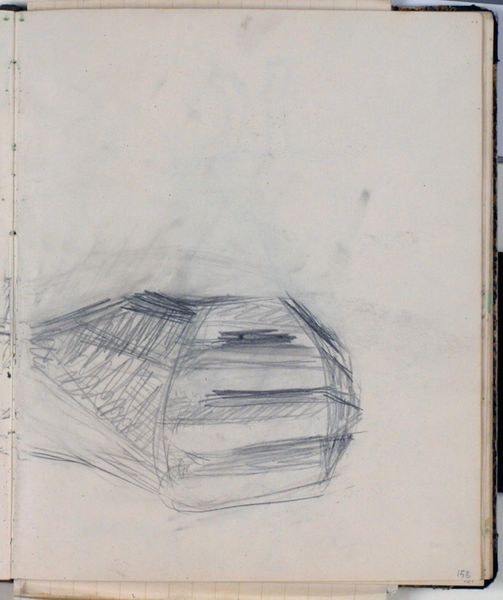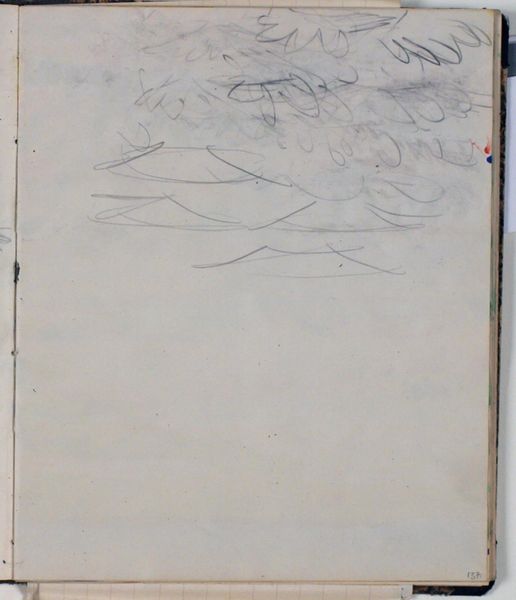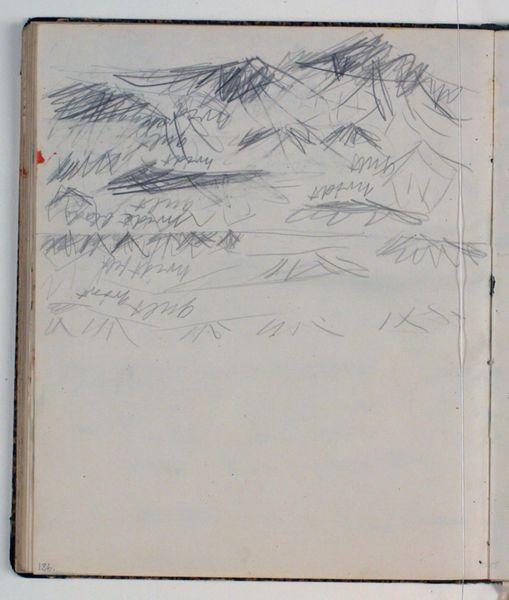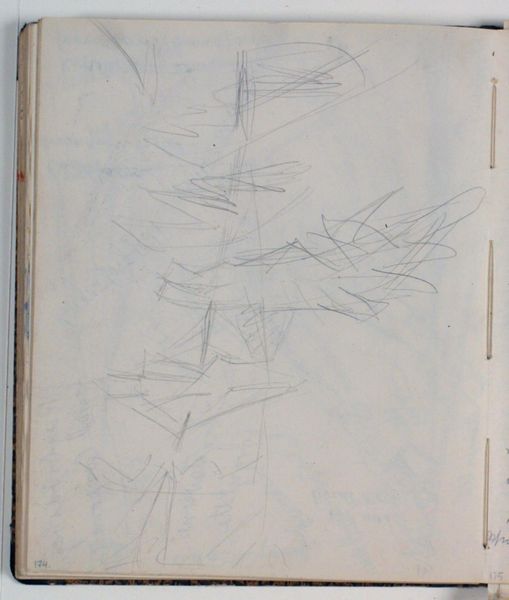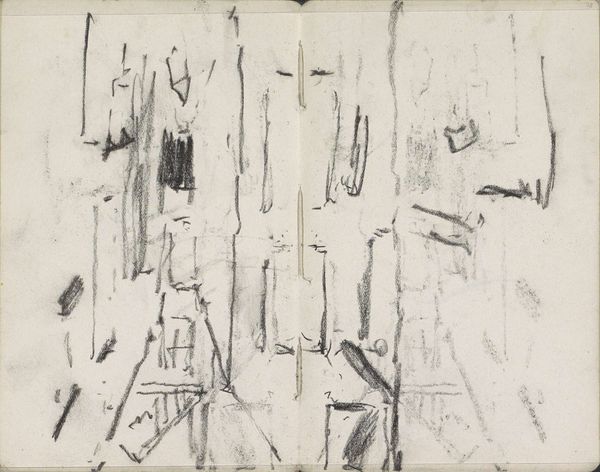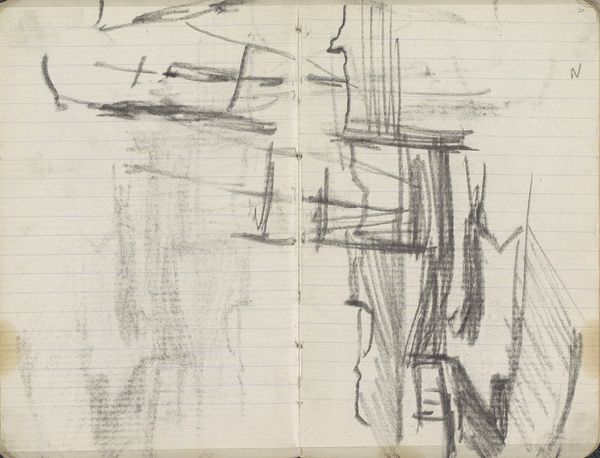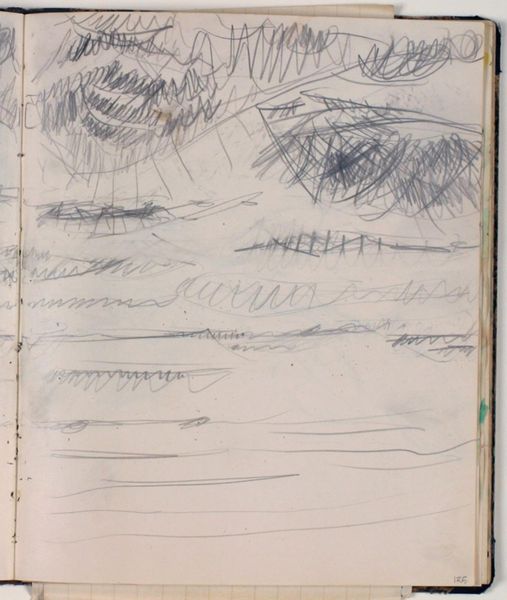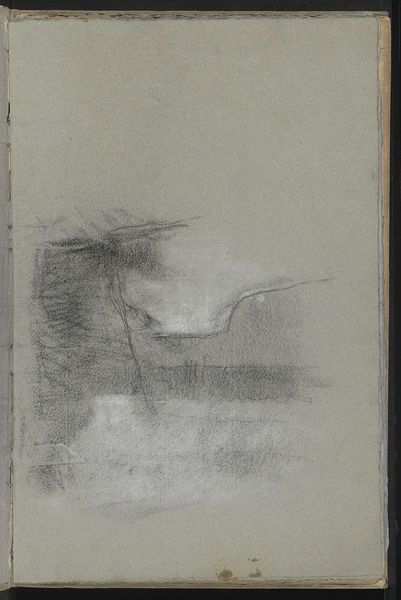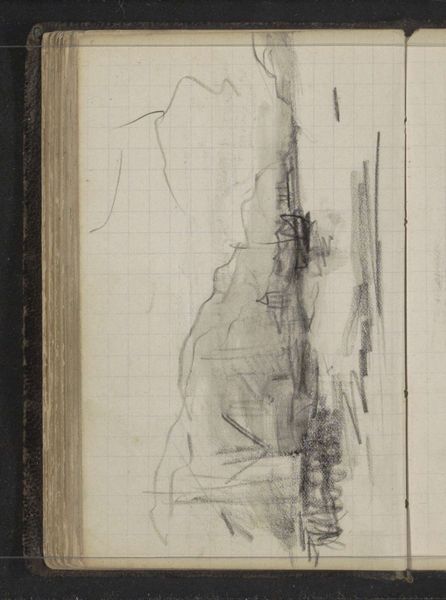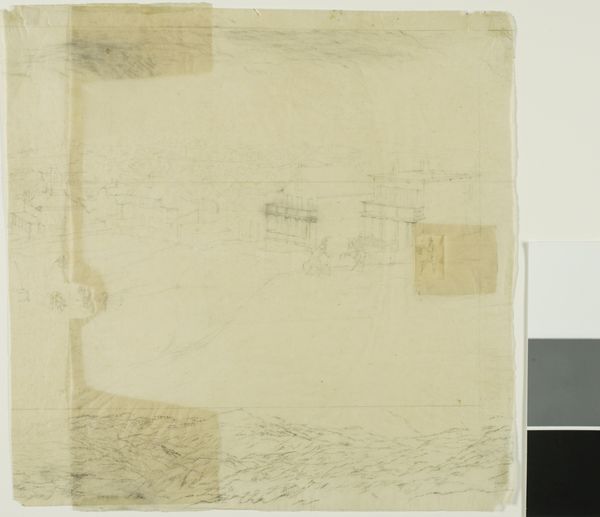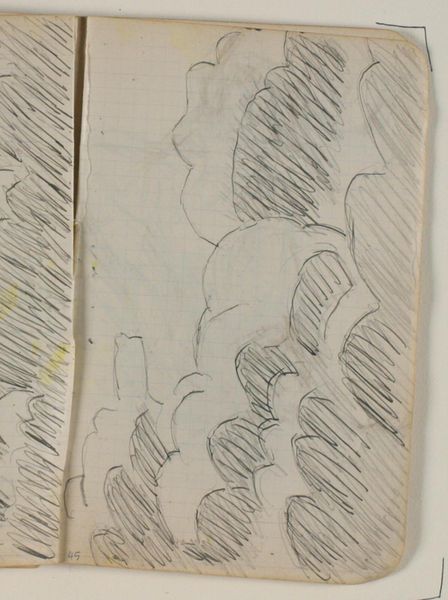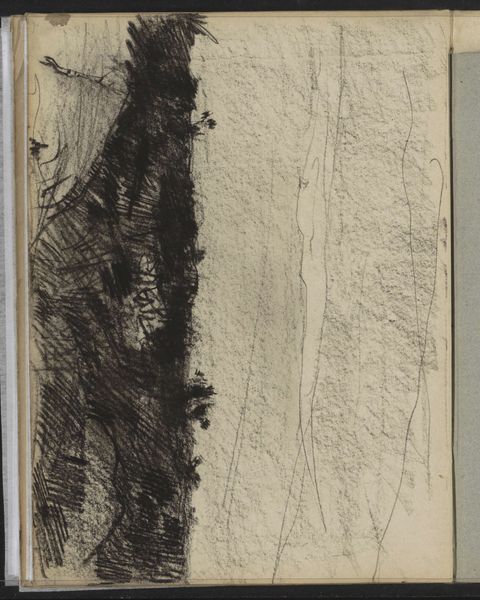
Thorvaldsens venstre hånd. Skitse til "Engen ved Nysø" 1930 - 1936
0:00
0:00
drawing, paper, pencil, graphite
#
drawing
#
landscape
#
paper
#
pencil
#
graphite
Dimensions: 226 mm (height) x 185 mm (width) x 112 mm (depth) (monteringsmaal), 221 mm (height) x 184 mm (width) (bladmaal)
Editor: This graphite and pencil drawing on paper, "Thorvaldsens venstre hånd. Skitse til 'Engen ved Nysø'," by Niels Larsen Stevns, dating from 1930 to 1936, seems like a preliminary study. I'm immediately struck by its raw, unfinished quality. What stands out to you? Curator: The interplay of line and space within the confines of the paper provides the initial framework for understanding this piece. Note how the directional strokes create a sense of depth, implying volume where there is none. How does this contrast between two-dimensionality of the support, and the illusion of three-dimensionality interact, do you think? Editor: Well, the shading definitely suggests form, especially where the lines are densely packed, but there’s also a lightness because it’s just pencil. I wonder, how does the medium contribute to the overall effect? Curator: The graphite, being intrinsically grayscale, restricts the field of visual components to the interplay of texture and tonality. The value exists within a spectrum bound by the whiteness of the page on one end, and the saturation limits of the applied material. So where do you believe Stevns positions the composition between these value thresholds? Editor: Towards the lighter end, I think. There’s a lot of white space still visible. It gives a sense of airiness, maybe? What else can we learn just from the composition itself? Curator: Indeed, its lack of bold color ensures that emphasis is determined by relative luminosity; therefore the sketch has minimal representational constraints that would otherwise govern pictorial structure. Consider the implications in semiotic and post-structuralist thought that suggest a more authentic connection to experience due to that liberation. Any closing thoughts? Editor: I hadn’t thought about it that way before. Looking at the drawing as pure form and line gives me a whole new appreciation for Stevns’ artistic choices. Curator: Precisely; analyzing components like tonal and chromatic register can unveil much more than what is plainly pictured.
Comments
No comments
Be the first to comment and join the conversation on the ultimate creative platform.
